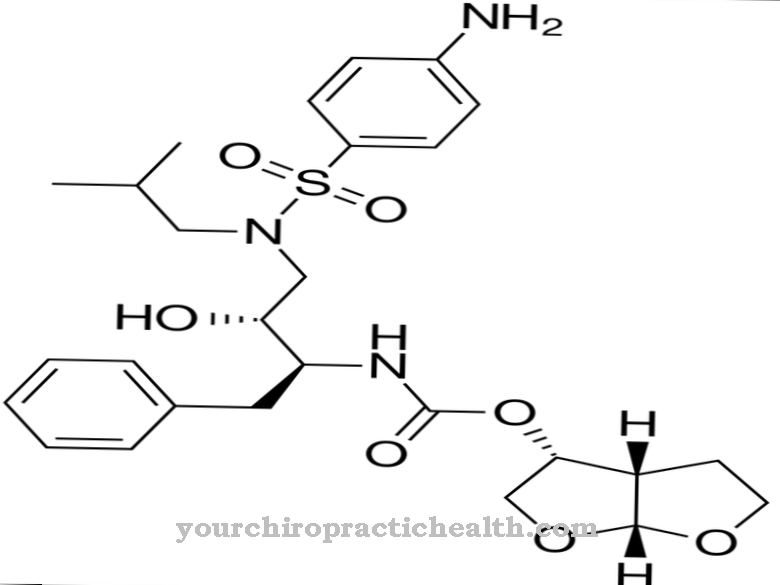Thalidomide is a drug from the sedative class of drugs. It led to the thalidomide scandal through damage to the unborn.
What is Thalidomide?

The active ingredient thalidomide, also called α-phthalimidoglutarimide known, was previously prescribed as a sleeping pill and sedative. It was developed in the 1950s in the Stolberg pharmaceutical company Grünenthal. In the 1960s, the Grünenthal company generated almost half of German sales with the active ingredient thalidomide.
According to Grünenthal's research results, no pathological reactions were found in non-pregnant rats and mice. Even high doses caused neither fatal reactions nor side effects in animal experiments. As a result, the active ingredient was classified as non-toxic. From October 1957 to November 1961 Grünenthal marketed the active ingredient under the name Contergan as a sedative and sleep medication with almost no side effects.
Contergan was even recommended as the preferred drug for pregnant women with insomnia in the late 1950s. A short time later, the so-called Contergan scandal occurred, as the number of deformed newborns increased. At the beginning of 1959 it became clear that the damage was due to the ingestion of the active ingredient thalidomide. Despite this, Contergan was still driven out until November 1961. There are around 4,000 thalidomide victims across Germany.
Thalidomide has been approved for the treatment of multiple myeloma in Germany since 2009.
Pharmacological effect
Thalidomide is a derivative of glutamic acid and belongs to the group of piperidinediones. These are structural modifications of the barbiturates. The active ingredient has a calming effect and promotes sleep. Anti-inflammatory properties have also been demonstrated.
The active ingredient blocks the growth factor VEGF. By inhibiting this vascular endothelial growth factor, the formation of blood vessels is inhibited.
Medical application & use
Due to the thalidomide scandal, thalidomide is of course no longer permitted as a sleeping or sedative. In Germany, however, the active ingredient is used to treat multiple myeloma. Multiple myeloma, also known as Kahler's disease, is a malignant disease that belongs to the B-cell lymphoma and is characterized by an increase in the number of plasma cells in the bone marrow.
In the United States, thalidomide is also used to treat the infectious disease leprosy. Further indications for the use of thalidomide are various skin and autoimmune diseases. In children and adolescents with Crohn's disease in particular, there was an improvement in symptoms due to the immunomodulatory effect of the drug.
The dispensing of thalidomide is regulated in Germany by a paragraph of the drug prescription regulation. Medicines containing the active ingredient thalidomide are only available with a T-prescription. The T-prescription is a prescription form that is only used to prescribe thalidomide. Patients must also provide written assurance that they are taking contraception while taking thalidomide.
You can find your medication here
➔ Medicines to calm down and strengthen nervesRisks & side effects
If thalidomide is taken within the first three months of pregnancy, the unborn child will develop severe malformations. The extremities are particularly affected. Limbs and organs can be completely absent. The club hand is one of the typical dysmelias that can arise from thalidomide. It appears through a shortened arm and a forearm bent inwards or outwards. Whole bones can also be missing.
The reason for these malformations is the inhibition of the vascular endothelial growth factor. The lack of blood vessel formation in the extremities of the unborn baby leads to a shortened or completely absent application of arms and legs. On the basis of examinations it can be proven quite precisely which damage is caused at which point in time of pregnancy. If taken between the 34th and 37th day of pregnancy, for example, the auricle is missing. If it is taken between the 38th and 45th day after menstruation, the children develop arm malformations. Leg malformations develop between the 41st and 47th day. Initially, it was feared that thalidomide would also damage the genetic make-up and that the damage would be passed on to subsequent generations. However, this fear has not come true.
But thalidomide can also have side effects outside of pregnancy. For example, some patients develop polyneuropathy while taking thalidomide. There may also be an increased risk of malignant degeneration.



























